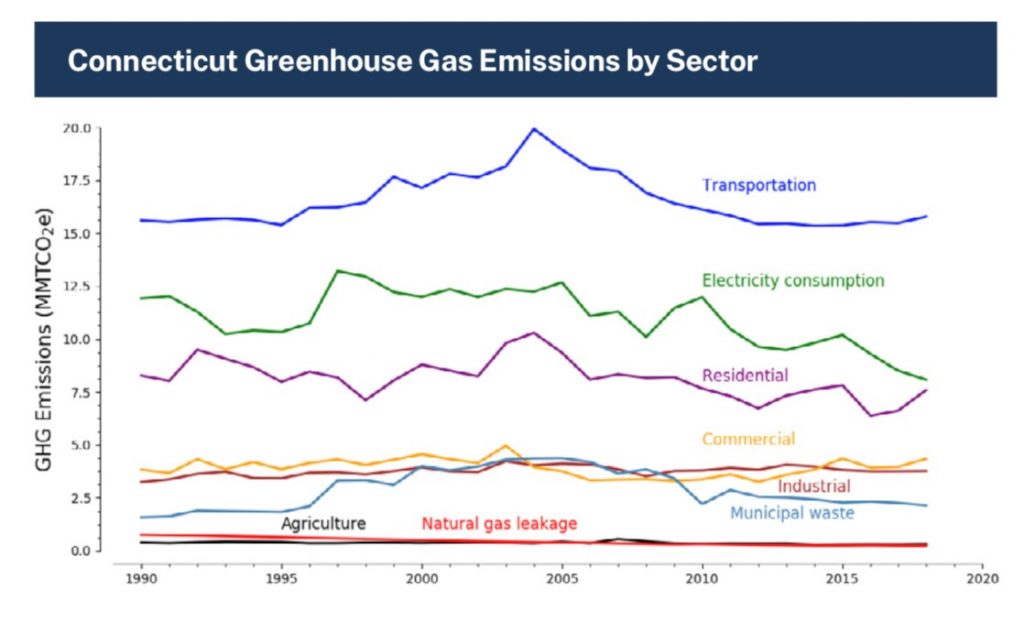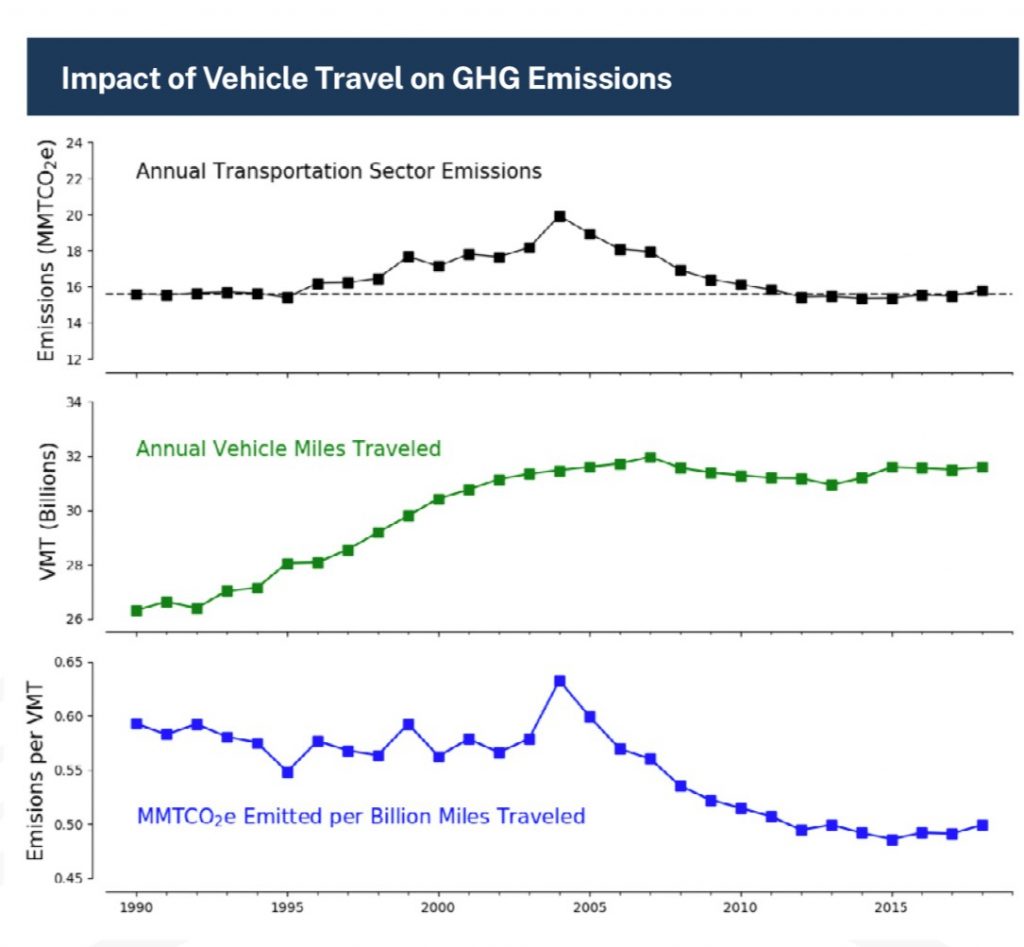Legislative action on TCI imperative in 2021 special session; new climate accountability provisions needed in 2022 session.
New Haven, Conn. – Today, the Connecticut Department of Energy and Environmental Protection released its greenhouse gas emissions inventory for 2018, the most recent data available. It highlights that not only do emissions from the transportation sector remain the largest source of our emissions, but they continue to grow and currently exceed the 1990 baseline level. The report makes clear that Connecticut is not on track to meet its state-mandated greenhouse gas reduction requirements, and will not meet them without additional urgently-needed action.

“While we deal with the fallout from global warming—three massive storms in less than two months—our state continues to abdicate its responsibility to act on climate,” said Charles Rothenberger, climate and energy attorney at Save the Sound. “This new data shows that not only is Connecticut no longer a national leader on climate, it is actually falling short of its own mandated greenhouse gas reductions. Last session the General Assembly had numerous opportunities to take necessary and meaningful action on climate change pollution, including by passing the Transportation and Climate Initiative, and it failed on each and every one.”
More than three dozen climate mitigation bills were proposed during the 2021 regular legislative session. While a couple of relatively minor bills passed, the legislature chose not to act upon the most significant bill, authorizing adoption of the Transportation and Climate Initiative (TCI)—which could cut transportation sector emissions by 25 percent by 2030—before the clock ran out on the regular session. However, TCI has been highlighted for possible action in the upcoming Special Session.
“This report demonstrates that our legislative leaders cannot continue to turn a blind eye to our worsening climate crisis and our state’s failure to meet its own commitments. They must pass the Transportation and Climate Initiative immediately,” said Rothenberger. “This market-based, cap-and-invest program will reduce carbon emissions from the largest source of climate pollution in Connecticut, the transportation sector, while investing in healthy, resilient local communities.”
The report shows that Connecticut emitted 42.2 million metric tons of carbon dioxide equivalent (MMTCO2e) in 2018, a 2.7 percent increase from 2017 levels. The 2018 emissions exceed the 2020 statutory goal by 2.9 percent (1.2 MMTCO2e).
“The troubling reversal of greenhouse gas emissions trends is not only a call for new policies, it also illustrates why we must incorporate accountability measures into existing law,” said Rothenberger. “State agencies must consider and mitigate the greenhouse gas emissions impacts from its permitting, licensing, and other actions “, and Connecticut residents need the clear ability to sue them when they fail to live up to that responsibility.”
Accountability provisions were incorporated into drafts proposed to the legislature last session. Like the other climate mitigation bills, it failed to garner legislative support.

###
